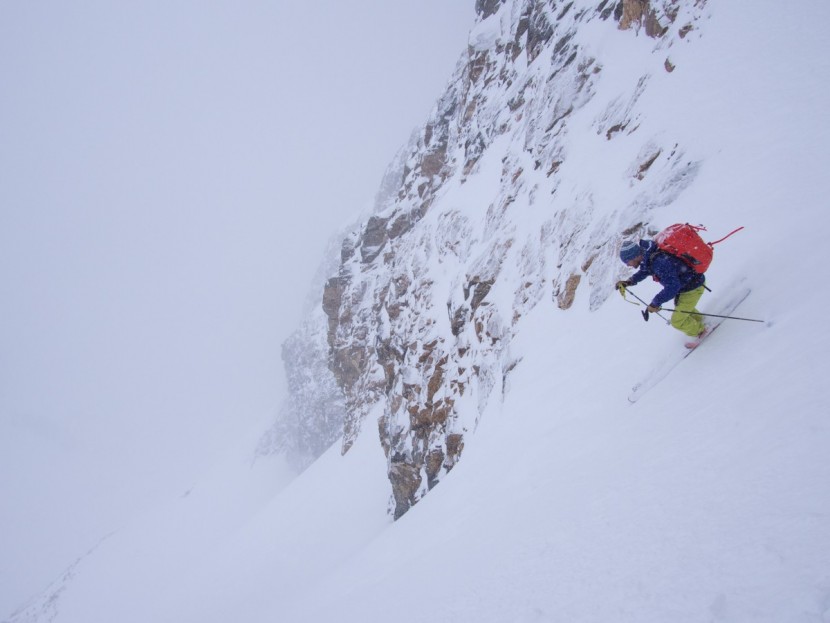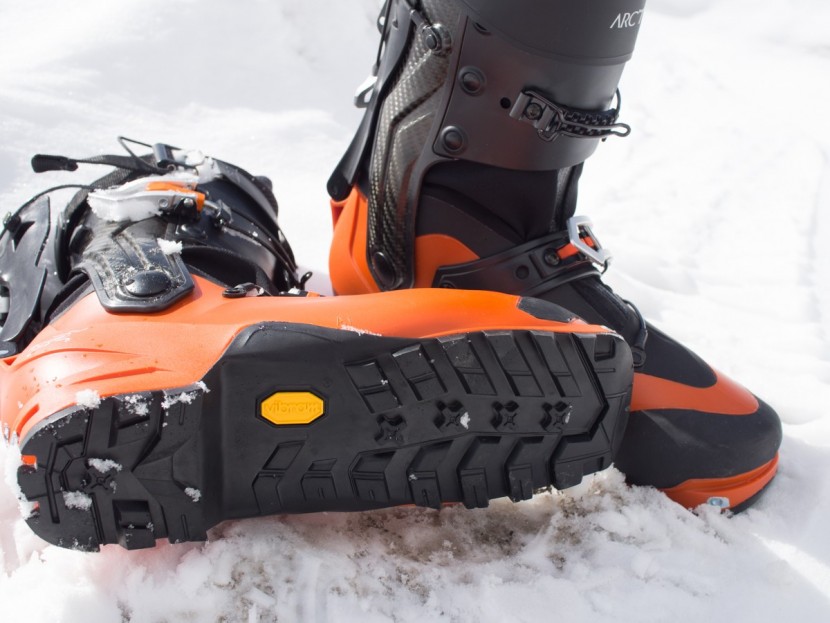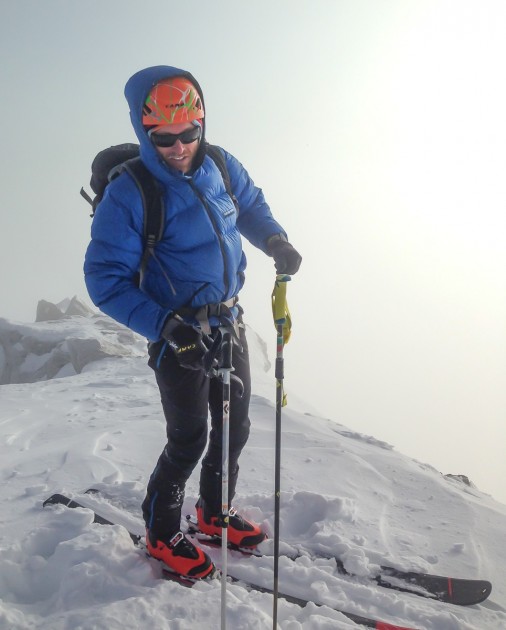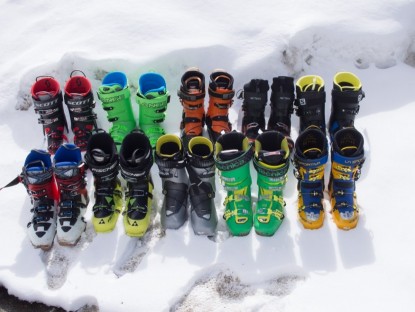Arc'teryx has issued a recall for their Procline boot line. Boots manufactured between Nov 2015 and March 2017 are thought to be affected. The recall pertains to a faulty axis pin, which may become dislodged, and could cause the wearer to lose control while skiing. If you own this boot, you can find more information about the recall here, including instructions to follow to have your boot repaired at no cost.
Arc'teryx Procline Carbon Lite Review
Our Verdict
Arc'teryx has issued a recall for their Procline boot line. Boots manufactured between Nov 2015 and March 2017 are thought to be affected. The recall pertains to a faulty axis pin, which may become dislodged, and could cause the wearer to lose control while skiing. If you own this boot, you can find more information about the recall here, including instructions to follow to have your boot repaired at no cost.
Our Analysis and Test Results
Hands-On Review of the Procline Carbon Lite
Arc'teryx clothing regularly scores high in OGL reviews. The company, in that context, is known for solidly built, carefully tailored, widely appealing products. The Procline Carbon is all of those things, except the wide appeal. It is curious, if not telling, that this company's first ski boot is aimed at a very small niche in the market. The Procline Carbon is designed for, and marketed to, skiers that will climb in their boots or ice and alpine climbers that will ski in their boots. These two categories, together, are still a very small part of the market. That this forward-thinking company sees enough potential growth in this exciting category to build a product for it suggests a sea change in the ski and climbing business. The chart below allows you to compare the performance of the Procline Carbon Lite against the other contenders in our fleet, highlighting its overall performance score.
Up-hill Performance
This is a ski boot for climbing. We would sure hope it can perform well up-hill. In miles of vertical gain, we were pleased with the uphill performance of the Procline. Our testers that have also used rando race boots indicate that it has a range of motion that is in the same league as these boots. It isn't quite as good as a true world cup race boot, but it is as close as any recreational ski tourer should need. The motion covers a wide range, with minimal interference from hinge friction, flexing plastic, or liner binding.
The most innovative aspect is the lateral flex. No other ski boot on the market is designed to have lateral flexibility in tour mode. In this way, the Procline is in a class of its own. The wearer, with considerable fore and aft flexibility and a noticeable amount of lateral ankle flex, regains some measure of balance and ergonomics in his or her stride. Even the freest of AT boots only allow forward and backwards action at the ankle. This, most notably, inhibits balance when walking or skinning on uneven ground. The flex is still more inhibiting than your running shoes, but the mobility is at least a little noticeable.
The Procline Carbon tours a little better than the Dynafit TLT 7, a little worse than the Atomic Backland, and miles better than even the lightest “standard” boots like the La Sportiva Spectre 2.0 and the Scott Cosmos III. As compared to the overlap constructed Tecnica Zero G Guide and Lange XT, it is as if these products, in terms of uphill performance, are in entirely different categories.
Weight
Weight is pretty simple to assess. As compared to the other nine boots in the review, only two are lighter. At just under 6 lbs, the Procline Carbon is easily in the ultra light weight class with the Dynafit TLT 7 and the Atomic Backland Carbon. All the other boots we tested are heavier. In most cases, the other boots are much heavier. Top Pick Lange XT Freetour 130 is almost 140% the weight of the Arc'teryx model. Weight is an important scoring metric, as it informs one's energy expenditure on the way up. However, it isn't the only thing informing efficiency. For the weight, for instance, we'd expect the Proclines to ski better. The TLT 7 is lighter, but skis better.
Downhill Performance
In balancing all the tasks an AT ski boot must accomplish, designers are aiming to create something that descends like an alpine race boot and climbs like a running shoe. Now, that is impossible. Compromise is inevitable. To optimize downhill performance, uphill performance suffers. And, of course, vice versa. The Tecnica Zero G Guide, for instance, leans towards downhill performance. The Procline Carbon definitely leans towards uphill optimization. The close competitors, like the TLT 7 and Atomic Backland also lean towards climbing performance. If anything, the Procline is even more climbing optimized than these two. Like the Backland and TLT 7, the Procline has a wide range of motion for normal skinning.
On top of that, the Procline adds lateral flex for more technical uphill terrain. With all these attributes tilted toward the uphill, it makes sense that the Procline doesn't stack up as well for the downhill. In fact, the Arc'teryx model is the poorest down hill skiing boot in our test. It is serviceable, with our technically proficient test team using it occasionally for serious descents like the Grand Teton and on big skis like our Top Pick Backcountry ski Dynafit Chugach. Nonetheless, for tougher conditions, faster speeds, and less proficient skiers, the Procline boot will come up short. For more robust downhill performance, any other boot in our review will be better. Even the Best Buy Dynafit Radical Boot is slightly better, while the Lange XT Pro is leagues ahead.
Comfort and Fit
In evaluating Arc'teryx soft goods, we've come to expect immaculate construction and an uncanny comfort and fit. Their boots are no exception. Even testers with abnormal feet found the Procline Carbon to be remarkably comfortable. For those with the gnarliest of fit issues, the shell is readily modified by a high-end professional boot fitter. The liner is smooth, supportive, and soft on the inside. The buckles allow for fine-tuning of the snugness.
In order to establish good comparative fit recommendations, we ordered all the tested boots in mondopoint size 26.5 (approximately US men's 8.5). This size, in most cases, is perfect for our lead test editor. He was able to compare, then, all the boots for fit. Of all the boots we tested, the Procline Carbon is the most snug. It is close fitting all around. He's also tried the next size up (27.0, Mondopoint) and found it to fit more similar to size 26.5 in basically all the other boots we tested. If you are ordering these “sight unseen”, and are between sizes, size up.
As compared to the other lightweight boots, the Procline is the narrowest. The Atomic Backland is quite a bit wider, especially in the forefoot, while the Dynafit TLT 7 is between the two. The only boots that are narrower than the Procline are the Tecnica Zero G and the Salomon S/Lab MTN. Both of these narrow boots, though, are for very different applications.
Warmth
All the lightweight boots we tested suffer in terms of insulation value. In order to make them lightweight, while still skiing ok, the manufacturers make the liners thin inside of close fitting shells. The shell plastic is also extremely thin. All this combines to make the lightweight boots all fairly uninsulating in cold conditions. In extensive testing, and when correcting for the fit differences, we found no appreciable difference between the Procline, the Atomic Backland, and the Dynafit TLT 7 in terms of insulating value. The size 26.5 Procline was colder than the 26.5 Backland, but when comparing more similarly fitting boots, the two are closer. Properly fit, the beefy boots like the Lange and Scott Cosmos III are much warmer.
Ease of Use
The innovative lateral flex of the Procline requires extra buckles to secure into downhill mode. There's one forefoot buckle, one upper buckle, a power strap, and the rear flex lock. Engaging all these different buckles is more steps than we're accustomed to performing in a lightweight AT ski boot. The TLT 7, for instance, basically has one buckle and an optional power strap. With the greater ski performance of the TLT 7, one can remove the power strap entirely, while the Procline benefits from the performance boost and the strap is part of the lateral flex function.
The TLT 7 can be modified such that there is one step between tour mode and ski mode, whereas the Procline will always have three steps. In this way, we prefer the simplicity of the Dynafit. The beefier boots in our test are all more complicated to change over, like the Procline. The one way in which the Procline Carbon surpasses the TLT 7, in terms of Ease of Use, is in crampon use. The “speed nose” of the TLT 7 requires special crampon consideration, while the Procline works with all crampons available.
Best Applications
These are truly niche boots, for those skiing to technical climbing objectives, in relatively warm mountain climates. Many will press them into service for all-around ski touring use, but the true value will only be realized by the niche practitioner.
Value
At retail price, the Procline Carbon is the most expensive boot in our test. It is $150-200 more than our Editors' Choice winners and almost twice the cost of our Best Buy winner. For this price, only the niche user will realize the value of this specialized tool.
Conclusion
What we like most about the Arc'teryx Procline Carbon Lite is what it says about the ski market and community. Our test team is passionate about wilderness ski mountaineering and multi-sport mountain travel. For these purposes, the Procline is well suited and its simple existence indicates the potential Arc'teryx realizes in this niche.
Other Versions
There is a less expensive non-carbon version, and for 2017-2018, Arc'teryx's business partner - Salomon - will brand the same general design, with some tweaks that make it slightly more suitable for general ski touring use.








